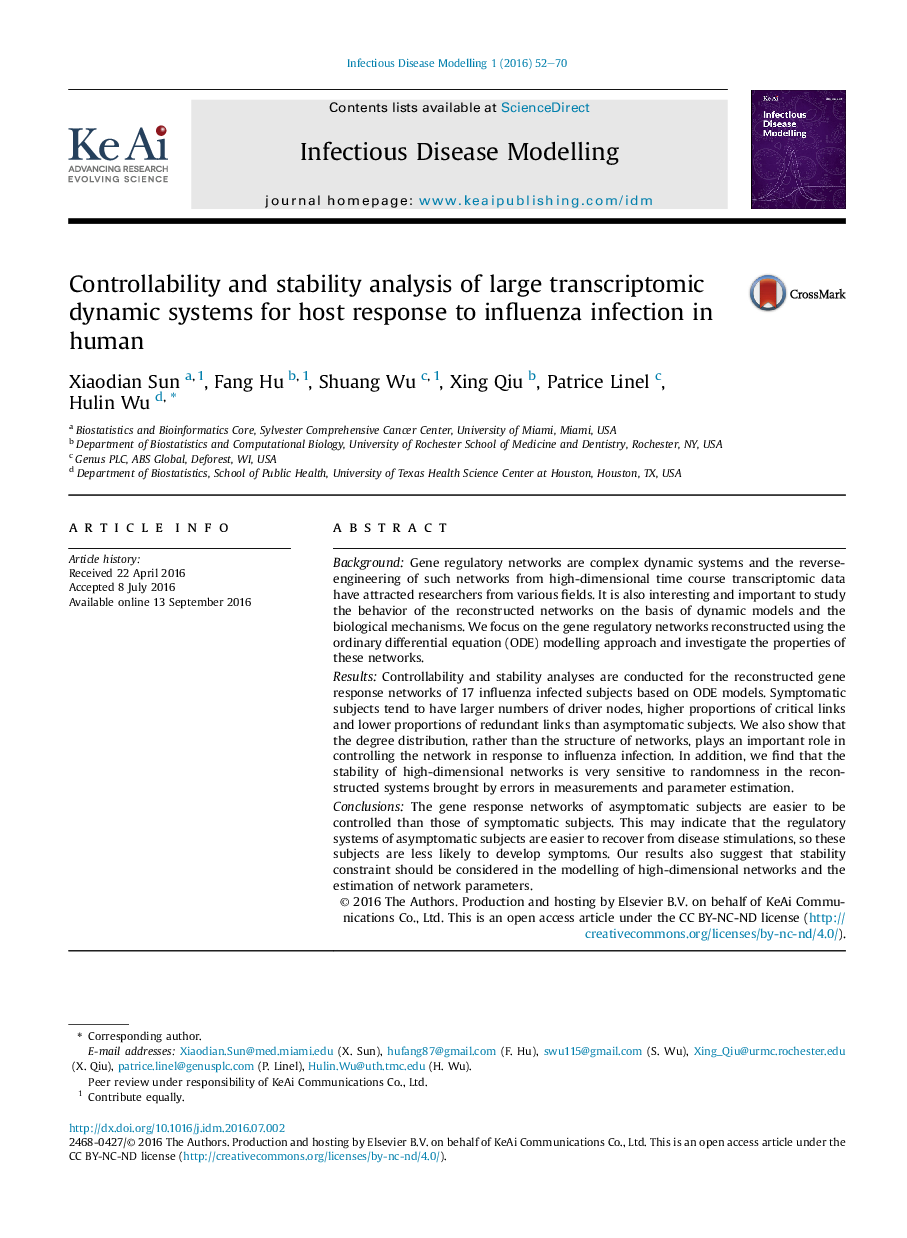| Article ID | Journal | Published Year | Pages | File Type |
|---|---|---|---|---|
| 5662892 | Infectious Disease Modelling | 2016 | 19 Pages |
BackgroundGene regulatory networks are complex dynamic systems and the reverse-engineering of such networks from high-dimensional time course transcriptomic data have attracted researchers from various fields. It is also interesting and important to study the behavior of the reconstructed networks on the basis of dynamic models and the biological mechanisms. We focus on the gene regulatory networks reconstructed using the ordinary differential equation (ODE) modelling approach and investigate the properties of these networks.ResultsControllability and stability analyses are conducted for the reconstructed gene response networks of 17 influenza infected subjects based on ODE models. Symptomatic subjects tend to have larger numbers of driver nodes, higher proportions of critical links and lower proportions of redundant links than asymptomatic subjects. We also show that the degree distribution, rather than the structure of networks, plays an important role in controlling the network in response to influenza infection. In addition, we find that the stability of high-dimensional networks is very sensitive to randomness in the reconstructed systems brought by errors in measurements and parameter estimation.ConclusionsThe gene response networks of asymptomatic subjects are easier to be controlled than those of symptomatic subjects. This may indicate that the regulatory systems of asymptomatic subjects are easier to recover from disease stimulations, so these subjects are less likely to develop symptoms. Our results also suggest that stability constraint should be considered in the modelling of high-dimensional networks and the estimation of network parameters.
